Plants with a healing effect >>>> Curative properties of Burdock
Curative properties of Burdock
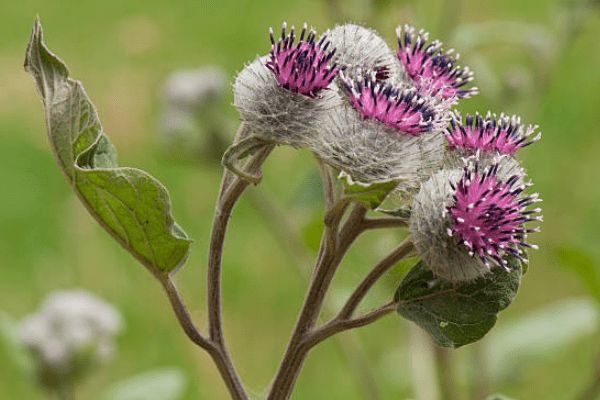
The Burdock plant looks like a weed, grows everywhere and is considered a very intrusive plant due to the fact that it clings with its prickly flowers to everything that moves past it (hence the saying: “It sticks like a burr”). Burdock has a lot of beneficial properties, but all of them are hidden underground, or rather, contained in the chemical composition of the Burdock root. Not all types of Burdock have the beneficial properties of the root, but only Big Burdock.
For curative purposes, Burdock root is usually used and rarely leaves, but the leaves are collected in the early period of plant growth, and the roots - towards the end of its growing season in the first year of the plant's life (deep autumn before the onset of cold weather). In the second year of life, burdock root is not suitable for use, as it becomes poor in nutrients and becomes woody. For this reason, without knowing how old a particular Burdock plant is, it makes no sense to use its roots for medicinal purposes. The healing properties of Burdock have been known since the dawn of medicine. In pharmaceuticals, the root of the Burdock plant is known as Radix Bardanae (Burr Root). In the pharmaceutical industry, the succulent and fleshy roots of Burdock in the thickest part of the root of the plant in the first year of life are considered medicinal raw materials suitable for use.
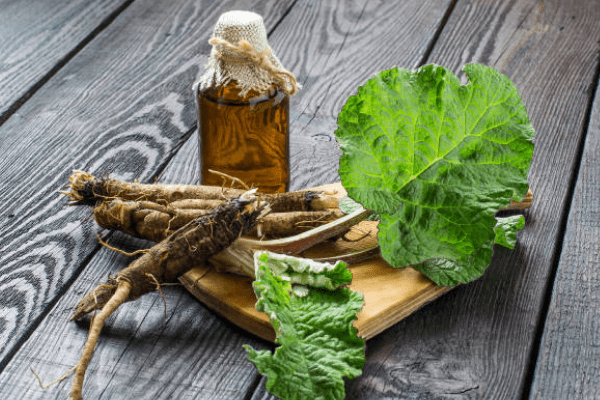
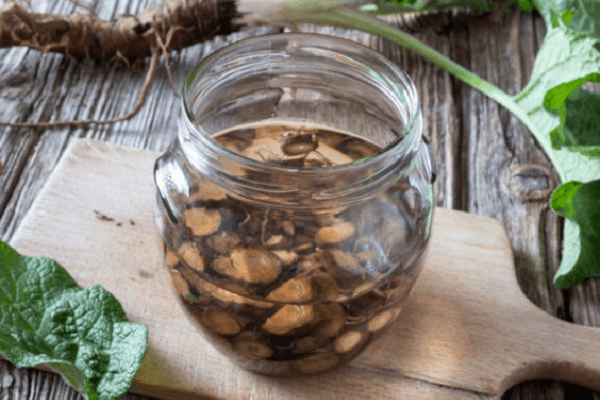
Raw Burdock root has a sweetish taste, slimy consistency and a high degree of juiciness. It is this quality that the roots are dug up, washed, peeled from the hard shell, cut along the root stem, dried in the open air, laid out on paper or fabric.
Infusions or decoctions are prepared from the prepared roots of Burdock Greater, which are used for internal and external consumption. It is believed that a set of chemical compounds that are beneficial to health and are part of Burdock roots helps with gastrointestinal diseases associated with inflammation of the mucous layer covering the intestines from the inside, peptic ulcers, colitis, and dyspeptic disorders. It has been noted that infusions improve the condition of the skin in case of skin diseases with a weeping effect, pustular diseases, furunculosis, and irritations of the head skin.
All the curative properties of Burdock root are associated with its beneficial composition:
- 45% inulin from the total mass of the root,
- tannins up to 0.8%,
- mucous substances up to 1%,
- 12% protein,
- fat-like substances up to 0.4%,
- high concentration of ascorbic acid.
Drinking infusions from Burdock roots are suitable for the prevention and treatment of diabetes, rheumatic diseases, and gastritis. To prepare a drinking infusion from Burdock root, use dry and crushed root in the amount of one tablespoon, poured with 14 ounces of boiling water. Infuse for 2 hours and drink 3.5 ounces 2-4 times a day.
To prepare a decoction of Burdock root, 0.70 ounces of dry raw material is poured with 7 ounces of water and boiled for 10-15 minutes. Drink 3.5 ounces decoctions three times a day.
Burdock decoctions and infusions for external use also have many advantages. Highly concentrated decoctions and infusions are used for baths for skin diseases and diseases of the genital mucosa.
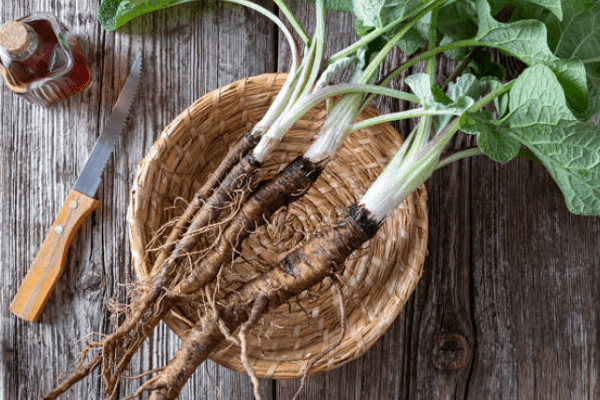
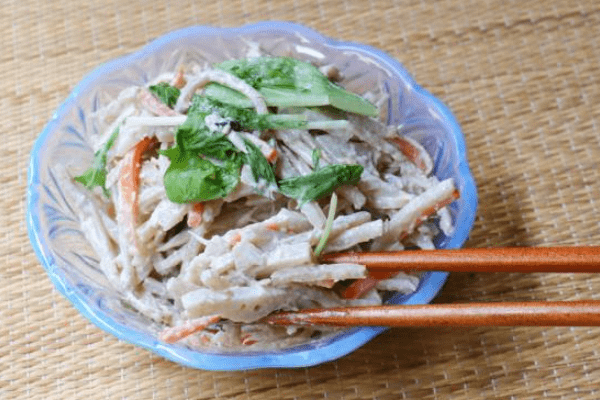
The composition of Burdock root is not inferior in its nutritional value and curative properties to vegetables and fruits.
In some countries, such as Japan, the Great Burdock plant is cultivated and grown in home gardens for food. Its Japanese version is called "Tobo", and the roots of the first year of the plant's life are also eaten. They are baked, boiled, fried, pickled or eaten raw. The juicy pulp is used to make soups (instead of potatoes), cutlets and dough for flatbreads. Burdock root is quite capable of replacing carrots, parsnips or parsley in terms of taste and nutritional qualities. From the roots of Burdock in sour milk with the addition of sorrel leaves and sugar, you can cook a healthy vegetable jam with the peculiar taste of pickled vegetables (sweet and sour taste). Young leaves of Burdock and roots of the first year of life are used in salads, stewed vegetables or vegetable snacks. And well-dried and ground roots of Burdock are added to Coffee, replacing Chicory, which is not useful for people with gastrointestinal problems.
Industrial burdock oil is obtained from the seeds of the Big Burdock plant, since the seeds contain 20% fat - this is a significant amount for obtaining concentrated oil. But at home, burdock oil can be prepared in another way and not from seeds, but from the root of the plant. For these purposes, fresh Burdock root (1.4 ounces) is grated on a coarse grater and infused in sunflower, olive or almond oil (3.5 ounces) for 10 days, and then boiled for 15 minutes over low heat at boiling point. The resulting burdock oil is cooled and used for medicinal (healing) and cosmetic (strengthening) purposes for mucous membranes, skin and hair.
Concentrated decoctions and oil from Burdock roots can be used to treat burns and bleeding abrasions.
The intrusive burdock called Greater Burdock has too many nutritional and curative benefits for its use for home curative and nutritional purposes to be ignored.

Read

Read



























